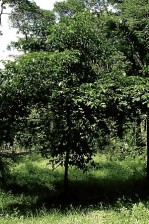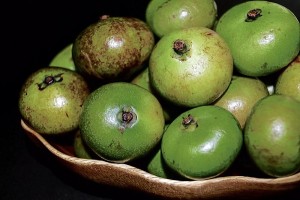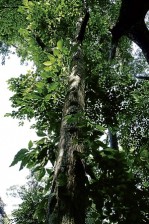
Batuan leaves would also be stuffed into roast chicken and the ever so popular lechon (roasted whole pig) to give them a tinge of that delicate sour flavor we loved so much.
Us girls, however, would just wash the fruit, score them with salt and dig our teeth into their crunchy, fruity tartness. Today, it is still a constant feature on our dining table with a cup of guinamos on the side, whenever the fruit is in season.
Much later, when my husband and I started looking for more Batuan seedlings to plant in the farm, we had a hard time collecting the number of seedlings we needed, and we did not have much luck in germinating the seeds.

The tree is a close relative of mangosteen. It is found all over the Philippines as well as in Vietnam. The Batuan, sometimes spelled batwan, has different names in different places. It may be called balikot (Ilocos Norte); bilukao (Rizal, Bataan, Batangas and Camarines); binukao (Laguna, Bataan, Batangas and Camarines); buragris (Camarines); kamangsi (Tayabas); kandis (Palawan); kamurai; kulilem (Cagayan); or maninila (Albay).
It must have been such a useful or popular tree to have been given names in many parts of the country. However, it seems to be more popular on the islands of Panay and Negros.
The renewed interest in our culinary traditions, native trees and reforestation is making the Batuan fruit more accessible to more people in more places. Chefs and cooking enthusiasts have taken a liking to the fruit and it will surely be an ingredient in many more inventive dishes in the near future. In the meantime, I will continue to eat the fresh fruit and have the piping hot sinigang of my childhood.


